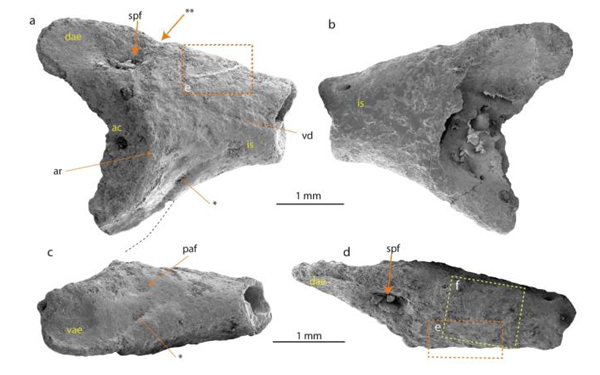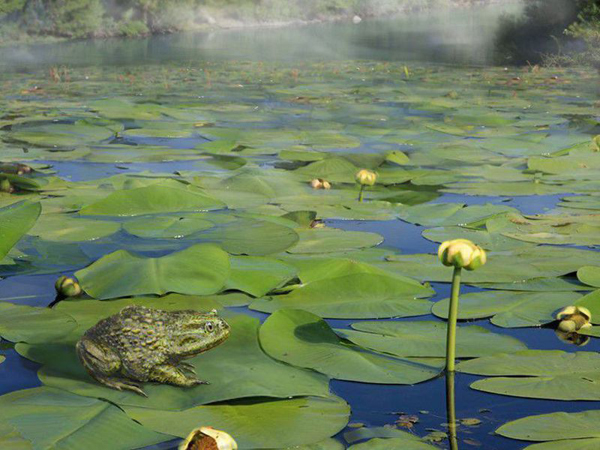The First Fossil Frog from Antarctica
A researcher from the Swedish Museum of Natural History in collaboration with colleagues from the University of Fribourg (Switzerland) and the Instituto Antártico Argentino based in Buenos Aires (Argentina), has published a scientific paper which provides details of the first fossil frog to have been found on the continent of Antarctica.
A Fossil Frog from Seymour Island
The fossils, consisting of a partial ilium and a bone from the skull which were found in Eocene-aged deposits on Seymour Island, resemble an extant lineage of frogs known as helmeted frogs (family Calyptocephalellidae). Until this discovery, no Cenozoic ectothermic continental tetrapods (amphibians and reptiles), had been documented from Antarctica. The tiny frog fossils suggest that around 40 million years ago, climatic conditions at high latitudes in the southern hemisphere were still mild enough to support “cold-blooded” amphibians.
A Life Reconstruction of the Helmeted Frog Found on the Antarctic Peninsula (Seymour Island)
Picture credit: Pollyanna von Knorring / Swedish Museum of Natural History
Studying Eocene Freshwater Habitats
Writing in the academic, on-line journal “Scientific Reports”, the researchers conclude that some Eocene freshwater habitats in Antarctica provided habitats that were favourable for cold-blooded (ectothermic) vertebrates such as frogs. Antarctica was much milder than it is today, the warmest months of the year averaging around 13 degrees Celsius whilst temperatures in the winter would have dropped to below an average of 4 degrees Celsius. Frogs were present in freshwater ecosystems at a time in the history of Antarctica where ice sheets had formed in upland areas towards the interior of the continent.
Views of the Fragmentary Ilium from Seymour Island

Picture credit: Swedish Museum of Natural History
The Discovery of Fossil Frog Remains
The fossil frog remains were collected during three joint Argentinian-Swedish expeditions to Seymour Island in the southern hemisphere summers 2011–13. The bone fragments were concentrated from dry-sieved sediment samples. The closest living relatives of the Eocene specimen are limited to the Chilean Andes (Calyptocephalellidae). With the discovery of the fossils on Seymour Island, the researchers conclude that these types of helmeted frog were much more widespread across what remained of Gondwana during the Eocene.
The material is housed in the palaeozoological collection of the Swedish Museum of Natural History, Stockholm.
The scientific paper: “First fossil frog from Antarctica: implications for Eocene high latitude climate conditions and Gondwanan cosmopolitanism of Australobatrachia” by Thomas Mörs, Marcelo Reguero and Davit Vasilyan published in Scientific Reports.
The Everything Dinosaur website: Everything Dinosaur.







Leave A Comment